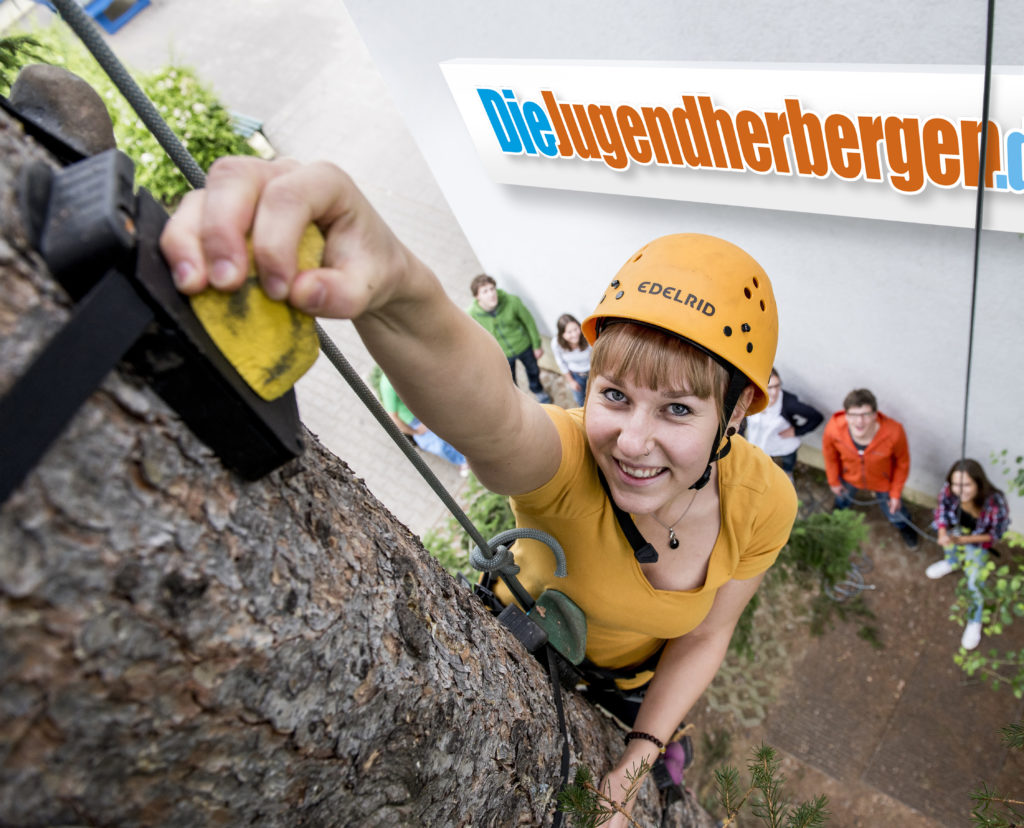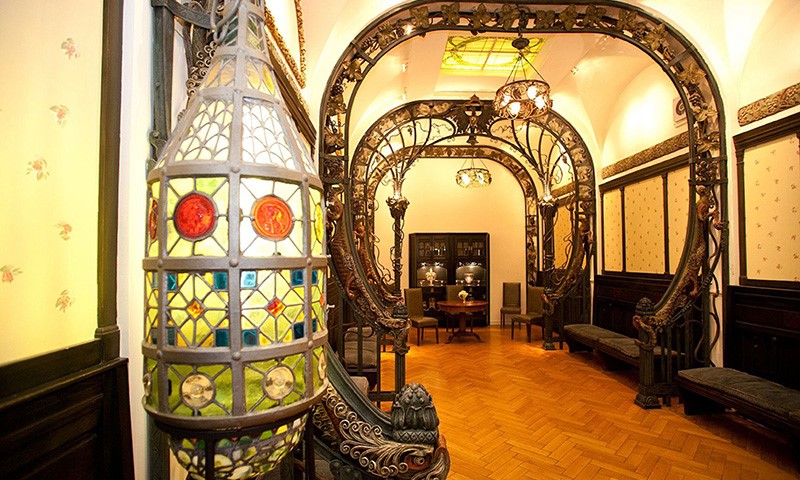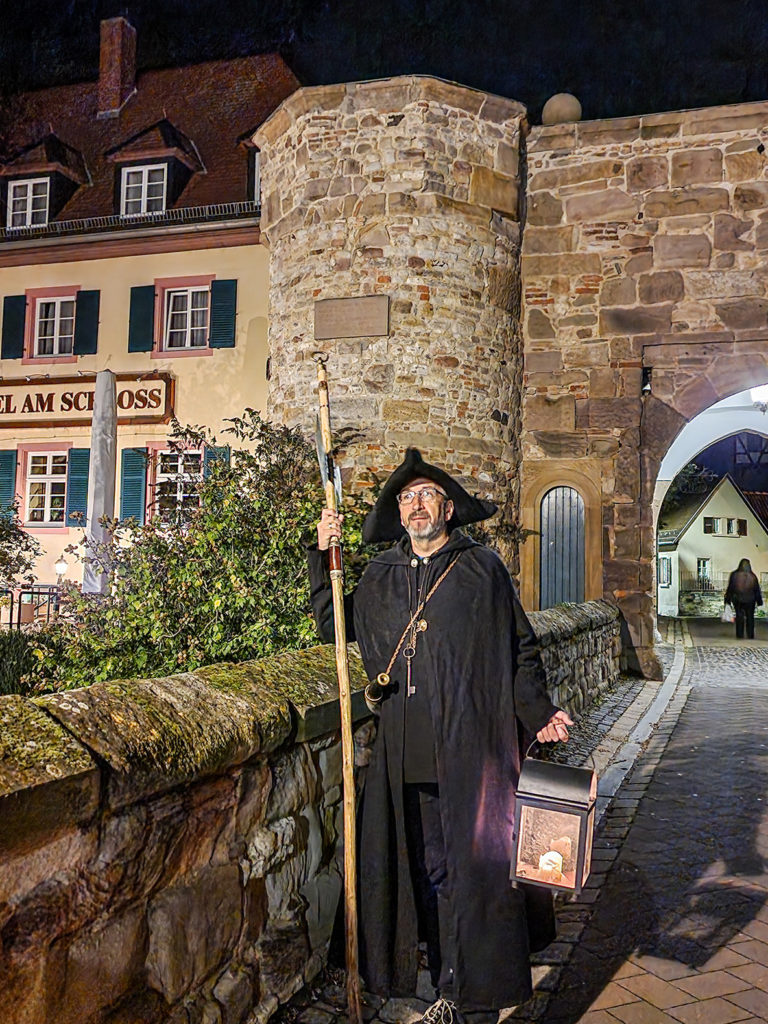Since 2021, the Jewish monuments in the cities of Mainz, Worms and Speyer have been UNESCO World Heritage Sites. The only ones in Germany! I went on a search for clues with tour guides in Worms and Mainz to find out more about the Jewish history of these so-called SchUM sites to experience.
Worms - Little Jerusalem on the Rhine
My journey begins with the guided tour UNESCO World Heritage - the Jewish monuments in Wormswhich gives a compact insight into the Jewish history of the city. The meeting point is at the synagogue, where the tour guide Karin Kissel is already waiting for me. Further stops are the Rashi House and the Mikveh, which is unfortunately not accessible at the moment due to renovation work, and on through the Judengasse and finally to the Jewish cemetery Heiliger Sand. During the tour, it quickly becomes clear why Worms was also known as a small Jerusalem. Due to its advantageous location on the Rhine, Jewish merchants settled here early on. In addition, many Jewish scribes lived and worked in Worms, such as Rashi, who we will meet again later. Between the 11th and 13th centuries in particular, the city developed into an intellectual and cultural Jewish center, to which many monuments still bear witness today. Together with Mainz and Speyer, Worms formed a joint association that was regarded as the center of Ashkenazi, i.e. German, Jewry.
The synagogue - where Jewish tradition is lived again
For me, entering a synagogue is something special every time. This is because most of them were destroyed in the Reichspogromnacht of 1938 and often never rebuilt. The Worms synagogue, the earliest evidence of which dates back to 1034 on a foundation plaque, did not escape this fate. Despite the rescue attempts of a dedicated Jewish teacher by the name of Herta Mansbacher, the Nazis' destructive fury could not be stopped. Reconstruction of the synagogue began at the end of the 1950s. It was even possible to reuse some of the surviving original fragments.
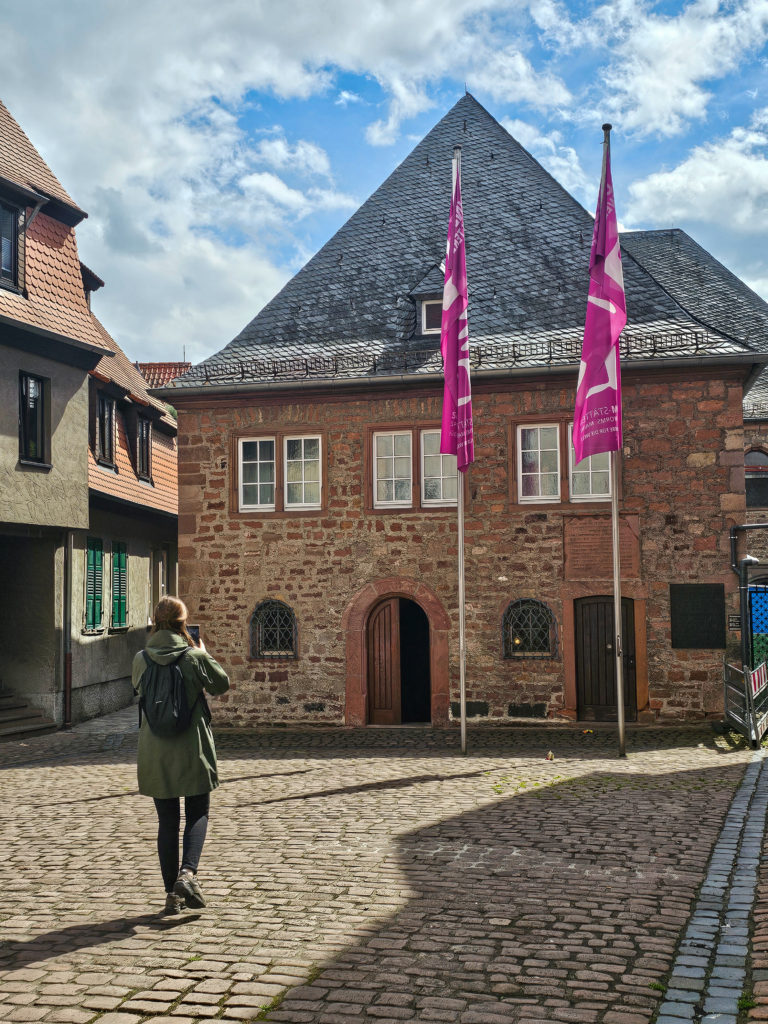
I sit eagerly on a wooden bench and listen to the stories that our tour guide has to tell about this place. Changing stories of episcopal protection and flourishing trade, as well as persecution and expulsion. We are also told what the name SchUM is all about: the abbreviation is made up of the first letters of the Hebrew names Schpira (Speyer), Warmaisa (Worms) and Magenza (Mainz). Incidentally, the Hebrew word Shum also means garlic. But that is just a coincidence.
That necessity is the mother of invention is proven by what I consider to be an unusual tradition that is said to have originated in the synagogue in Worms: A married couple wanted to have their child circumcised. However, they were so poor that they could not afford a diaper for their child. The boy's godfather, the scholar MaHaRIL, is said to have taken the ribbon of a Torah and wrapped the baby in it. This so-called circumcision pennant was washed and inscribed with the child's name and birthday, among other things, and kept in the synagogue. This tradition was then also carried out on other babies. Unfortunately, almost all of the more than 600 pennants were burnt in the great synagogue fire.

"There is now once again an active Jewish community in Worms with around 150 Jews who belong to the Jewish community in Mainz," says the tour guide. Knowing that Jewish traditions are once again being practiced and services celebrated here makes it clear that ShUM is by no means just the past, but also the present.
Mikveh - place of ritual purification
Closed since 2016 for renovation work, but still worth a visit is the mikvah from the 12th century. This is an immersion bath that Jewish women used to visit after their period and before their wedding. Only running water or collected rainwater could be used for the bath. It must have been pretty cold when I think of my modern bathtub with a hot water supply. The mikvah in Speyer, which was built a few years earlier and can still be visited today, served as an architectural model for the people of Worms - built into the ground like a tower.
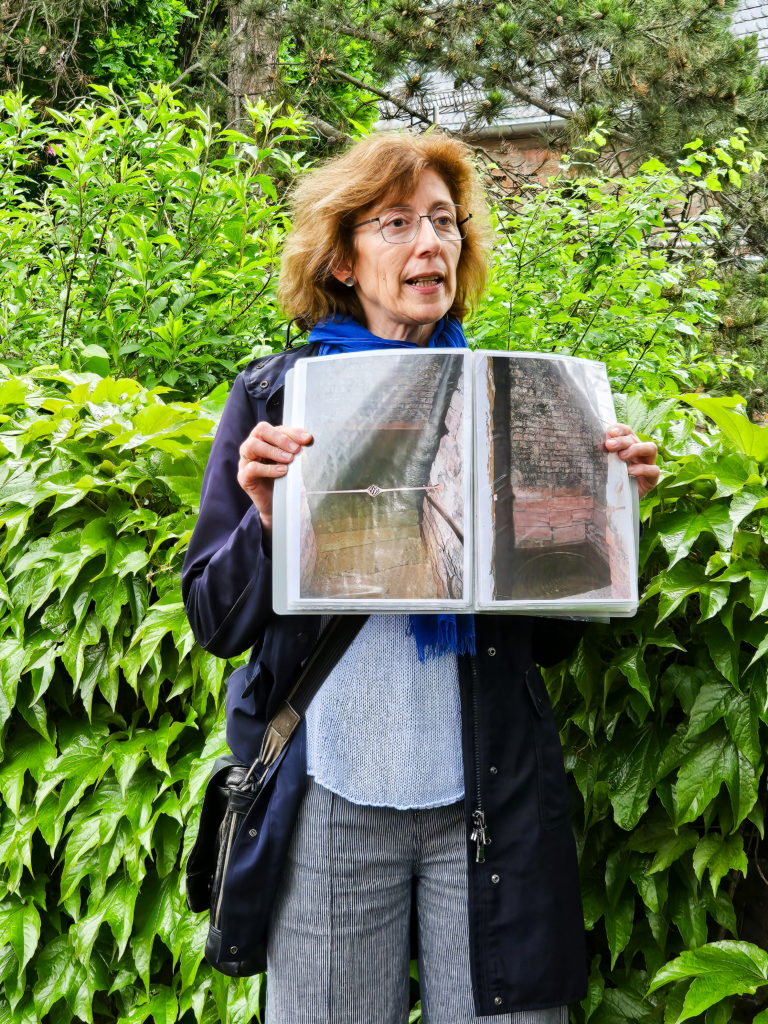
Heiliger Sand cemetery - the oldest Jewish cemetery in Europe preserved in situ
It is only a few minutes' walk from Synagogue Square to the last stop on the tour, the Jewish cemetery: it is considered to be the oldest Jewish cemetery in Europe that has been preserved in situ. It is located outside the medieval city wall and although it is surrounded by a busy road and close to a railroad line, there is a peaceful silence on this sunny spring day. Only the chirping of a blackbird can be heard. Important note for visitors: just like in the synagogue, men are only allowed to enter the cemetery with a head covering. Those who do not have one with them will be provided with a cap free of charge at the entrance.
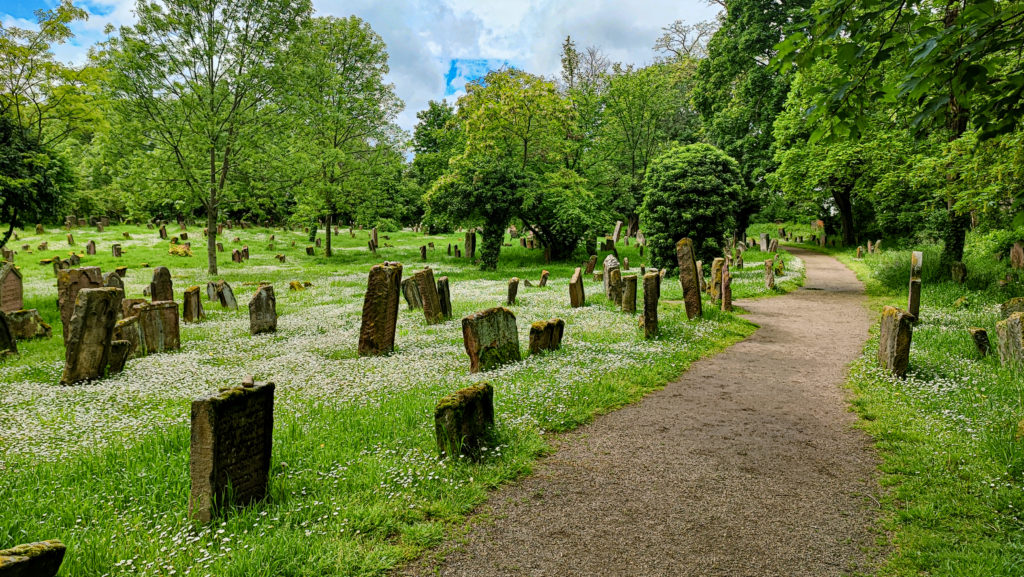
A sea of daisies surrounds most of the red sandstone gravestones in spring. Many are covered in moss and their inscriptions can no longer be deciphered. I would love to be able to read Hebrew to find out more about the people buried here. Some of the stones are so crooked that they threaten to topple over at any moment. What may seem overgrown at first glance is deliberately so. "In Judaism, the peace of the dead is very important, which is why fallen stones are left in place and the graves are generally left as they are," explains our tour guide. There are also no grave decorations such as candles or flowers, which I know from Christian cemeteries.
The tour guide draws our attention to another special feature: unlike in most Jewish cemeteries, the stones do not face east, i.e. towards Jerusalem, but south. Nobody knows exactly why. It is assumed that the gravestones were aligned to the south because of the Jews who came from Italy. Karin Kissel shows us the reason why many Jews still travel to Worms today at the very beginning of the cemetery. It is about two special gravestones that lie directly on the path and have a few small stones on them: That of the famous scholar Meir von Rothenburg and the merchant Alexander ben Salomon Wimpfen. The latter campaigned for the rabbi's mortal remains to be brought to Worms. His wish was to be buried right next to the rabbi, which he was granted.
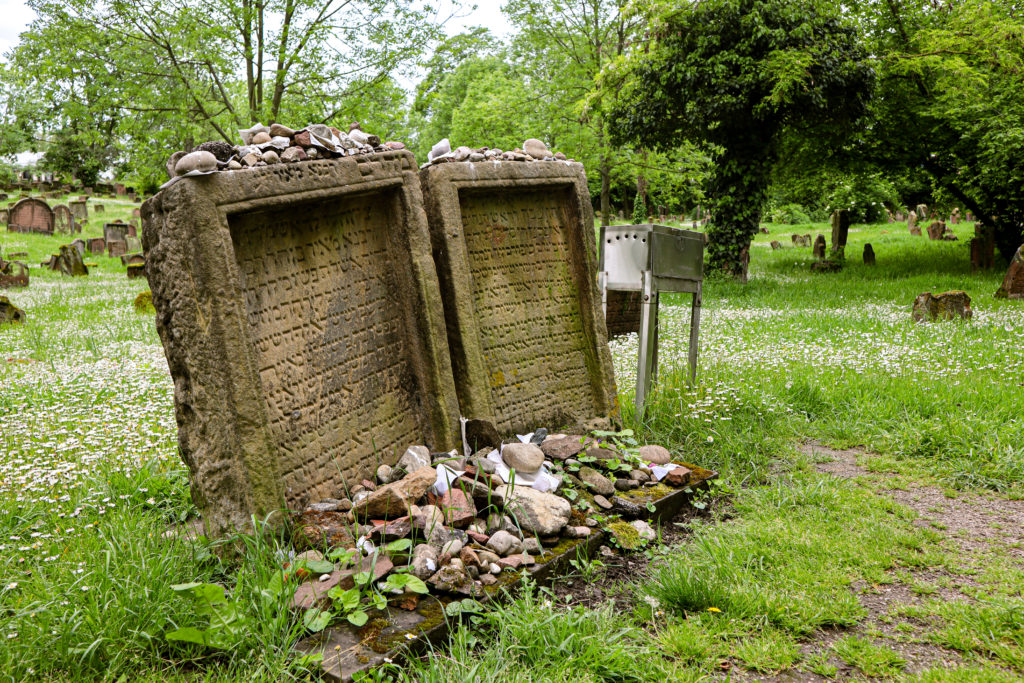
We continue to the back of the cemetery, where there are newer gravestones, mainly from the 19th century. I immediately notice that not only Hebrew but also German inscriptions can be found on them. The gravestones are also more elaborately designed than the simple stones in the front section. Incidentally, from here you have a wonderful view of Worms Cathedral, the so-called Martin Buber View. Named after the Jewish philosopher of the same name. A place to pause for a moment.
I am particularly touched by the gravestone of a woman called Therese, whose shape stands out from the 2500 or so stones. It is based on an oak tree stump with a bent branch, symbolizing a short life. However, there are also recurring symbols such as jugs, two flat hands or flowers. The house signs of some families can also be found on the gravestones. This is because house numbers did not yet exist during the Middle Ages.
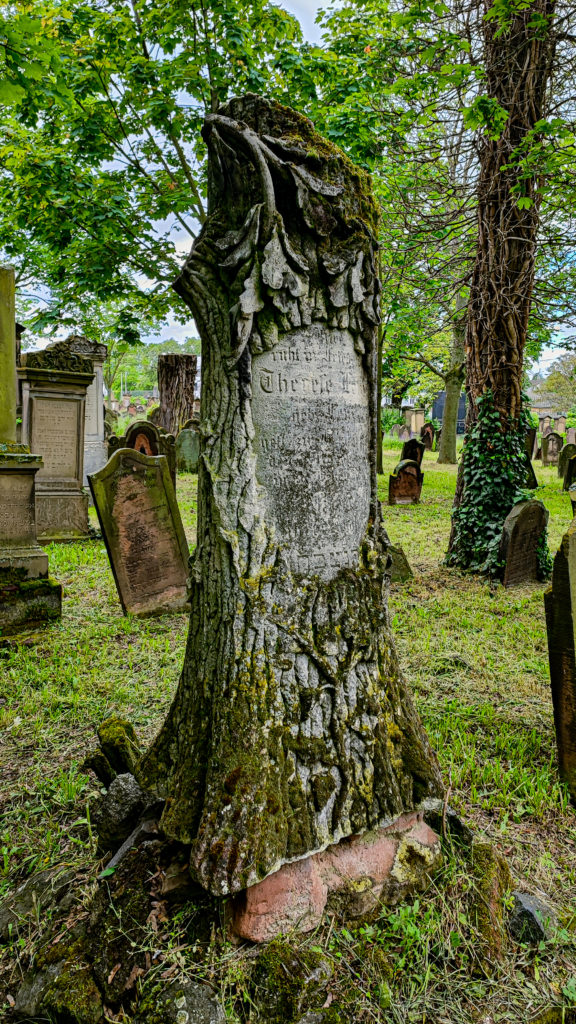
The oldest gravestone in the cemetery is inconspicuous and barely decipherable, yet of enormous importance. It is dated to the year 1058/1059. The stone has been here for almost 1000 years! It is a miracle that this stone has survived all wars and weather conditions. Incidentally, this is the only gravestone in the Valley of the Scholars that faces east, which is common for Jewish cemeteries.
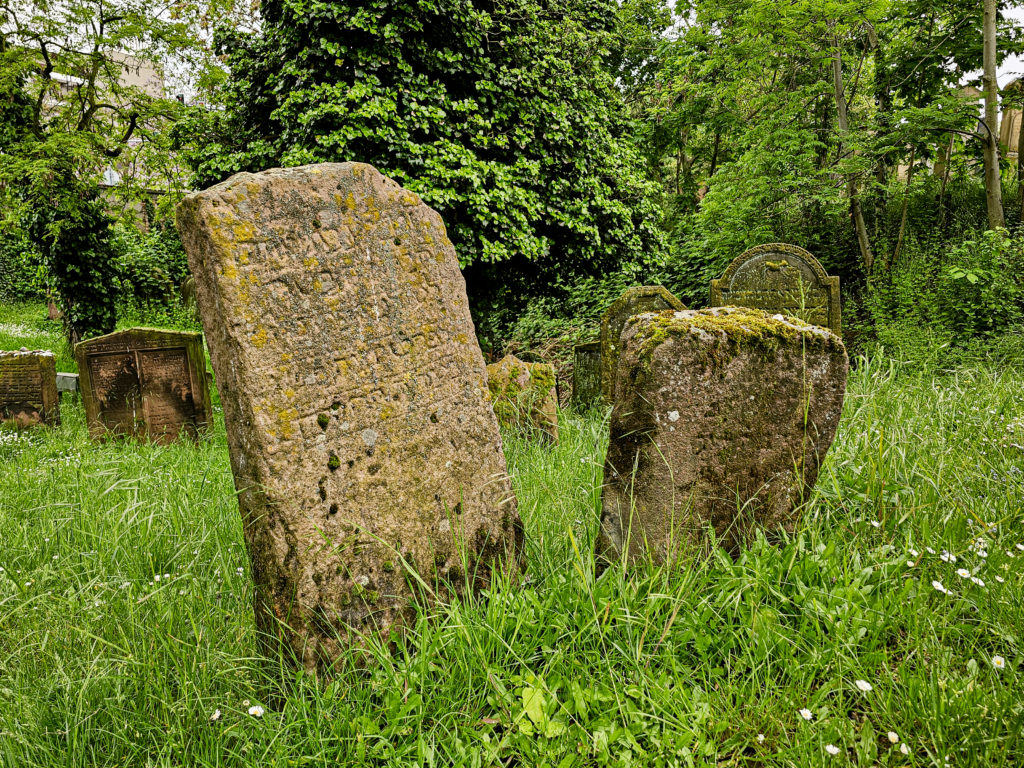
The Rashi House
After a short lunch break, I take another walk back to Hintere Judengasse. Where the Jewish community center once stood from the 12th century is now the Rashi House with the SchUM exhibition. Rashi was a French-born scholar who wrote many important commentaries on the Talmud and the Bible. The exhibition is not part of the tour, but in my opinion it is an absolute must-see and offers a good addition. In addition to moving testimonies from Jews in Worms, you can also view copies of important documents or even see the medieval building fabric in the basement. This is also where the most famous exhibit is located: the Golem, a protective figure made from Hebrew wooden letters by the artist Joshua Abarbanel. The idea of this protective figure dates back to the 13th century in Worms. Legend has it that the golem is created from inanimate matter and certain letters.
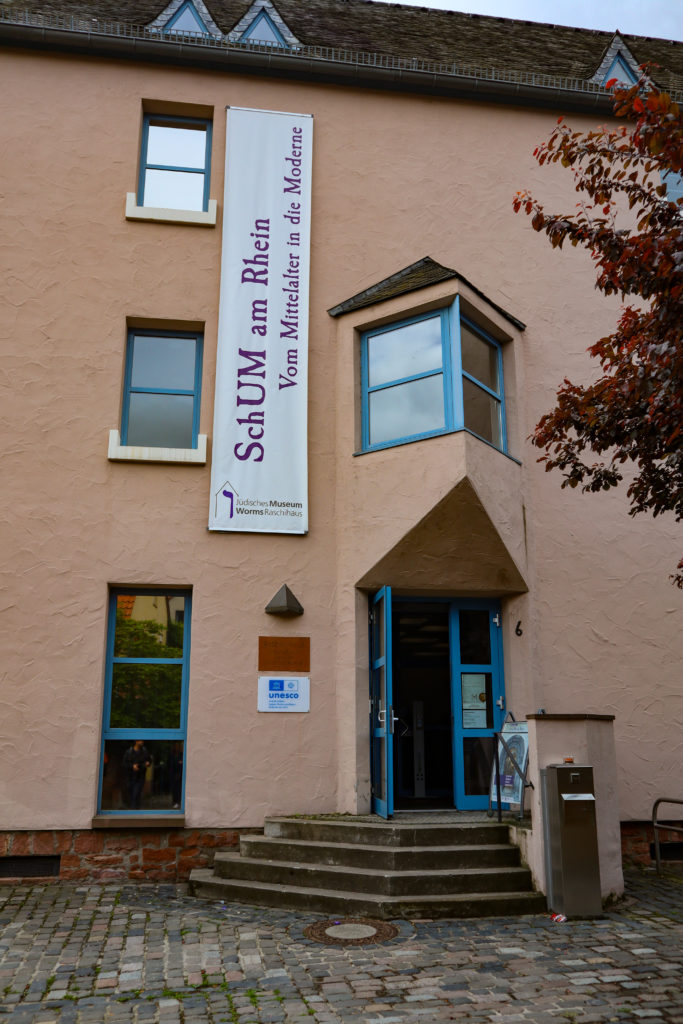
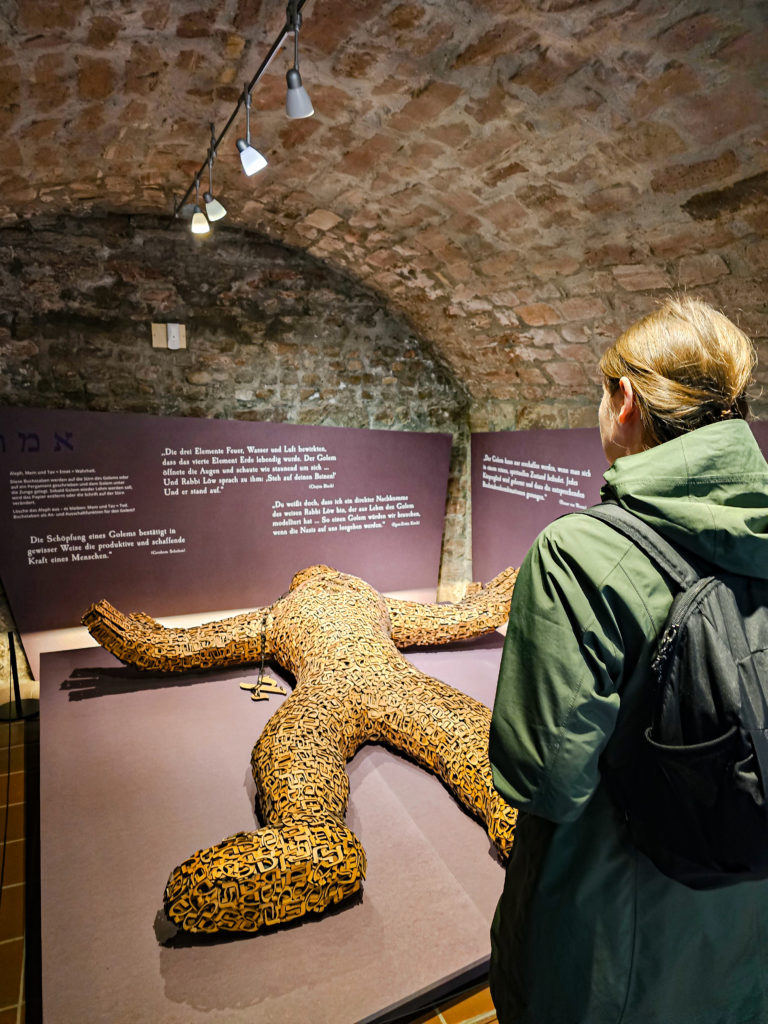
Two exhibits in particular stuck in my memory: A partially burnt Torah scroll with a circumcision pennant that was also marked by fire. We were told about this during the tour. For me, they are important documents that show: History must not be allowed to repeat itself.
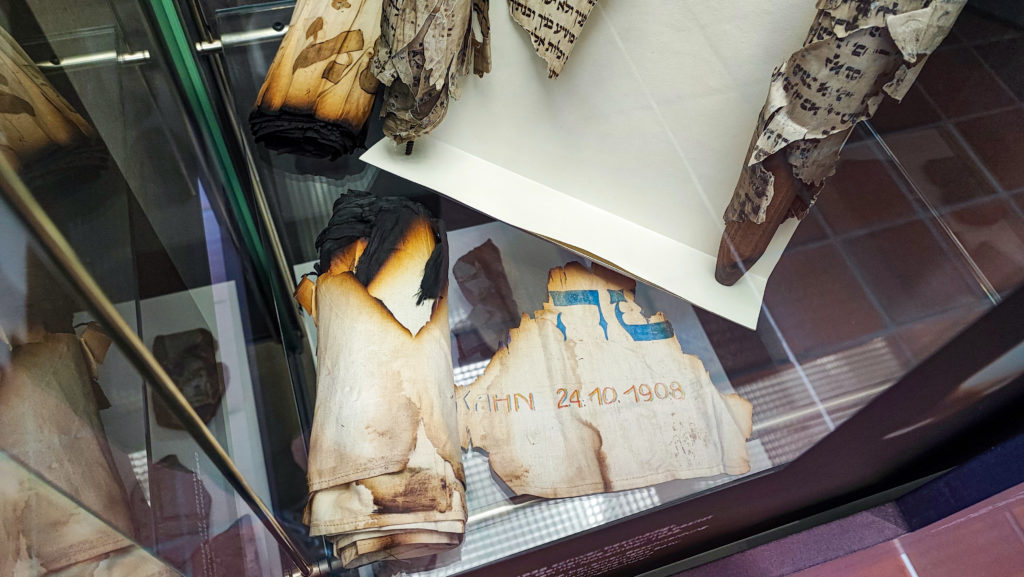
The Jewish cemetery in Mainz
A few days later, I set off for Mainz to the so-called Judensand, the Jewish cemetery and the second stop on my journey to the Rhine-Hessian SchUM sites. I have an appointment with tour guide Claudia Maria Strehl for a guided tour. I have to admit that the Jewish cemetery is not entirely unfamiliar to me: for two years, I walked past here on Mombacher Straße every day on my way to work. When I wasn't in a hurry, I often stopped to look at the gravestones from a distance. Now I finally had the opportunity to take a closer look at the cemetery as part of a guided tour.
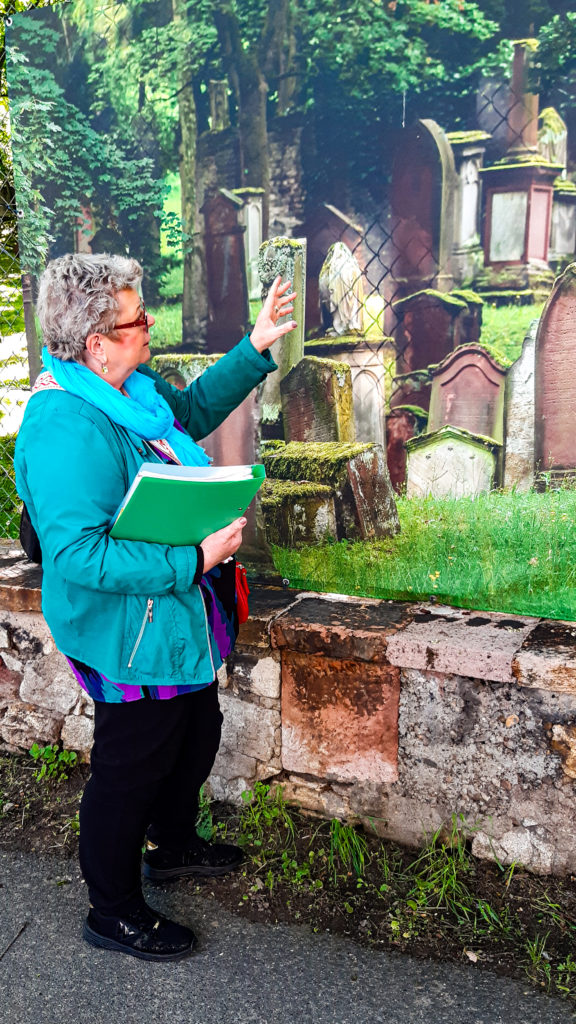
In contrast to the Jewish cemetery in Worms, the one in Mainz is not freely accessible. Only the lower part, the so-called visitors' cemetery, can be visited on guided tours. The upper part, the memorial cemetery, is located in the immediate vicinity of the Best Western Hotel and is not accessible to visitors. The gravestones can only be seen through a fence. But there are still a lot of plans: A visitor center is to be built up here.
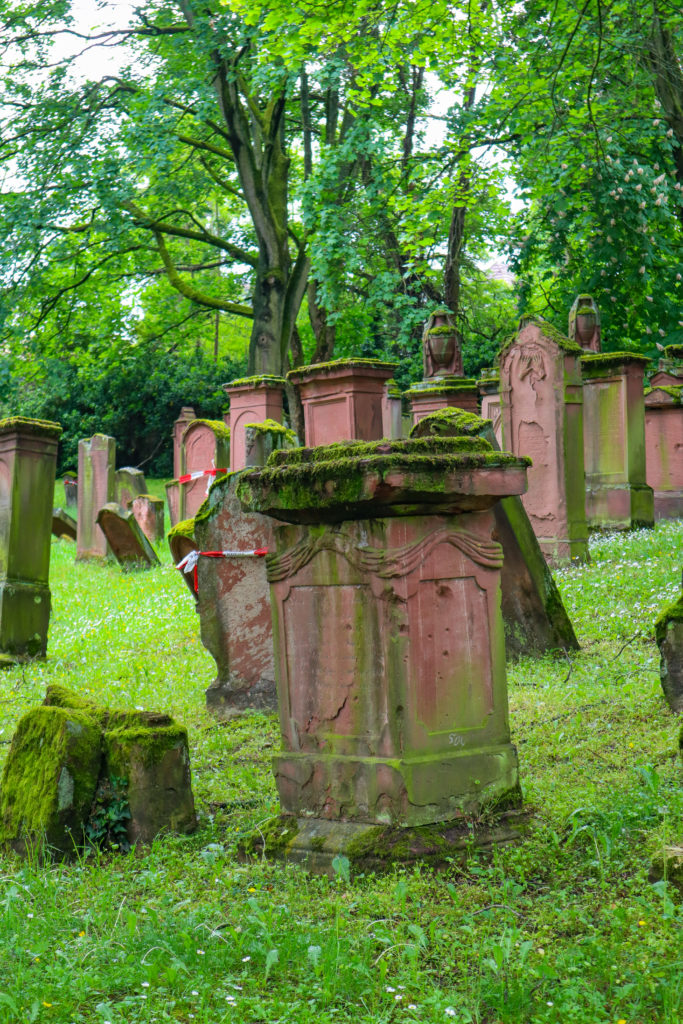
"Unfortunately, many of the gravestones are no longer in their original places," says tour guide Claudia Strehl. Over the last few centuries, many of the stones were removed and used as building material. It was only during construction work over the last 200 years that they were found by chance and finally re-erected in the memorial cemetery. However, some gravestones are still believed to be buried underground. Ms. Strehl is very familiar with the cemetery thanks to her many years as a tour guide and notes: "Some gravestones have changed over the years. Nature will take them back at some point. And although I've been here several times, I discover new details on the gravestones every time". Many bullet holes on the stones bear witness to the armed conflicts of the past centuries.
With around 1500 gravestones, it is of course impossible to take a close look at all of them during the tour. They are still being professionally documented and cataloged, and some are also being restored. Some gravestones are therefore marked with red and white tape, while others are wrapped in plastic sheeting for protection. Here you can see the restorers at work.
Would you like to find out more about Jewish history in Mainz? Then the guided tour Magenza - Jewish Mainz - One of the three SchUM cities just the right thing. It is also worth visiting the Landesmuseum Mainz, which houses the permanent exhibition Judaica accommodates.
SchUM app - A multimodal experience
For those who prefer to explore the World Heritage Sites on their own, I can recommend the free SchUM app highly recommend. I tried out the app at the Jewish cemetery in Worms. Like in a radio play, you meet different protagonists along the stations and learn more about the history of these special places. Perfect for families with children or those who find a traditional guided tour too boring. There are also old photographs and general information about parking and opening times. There are also interesting facts about the cities of Mainz and Speyer. To avoid disturbing other visitors, headphones should be worn when listening to the stories or the volume should be kept to a minimum.
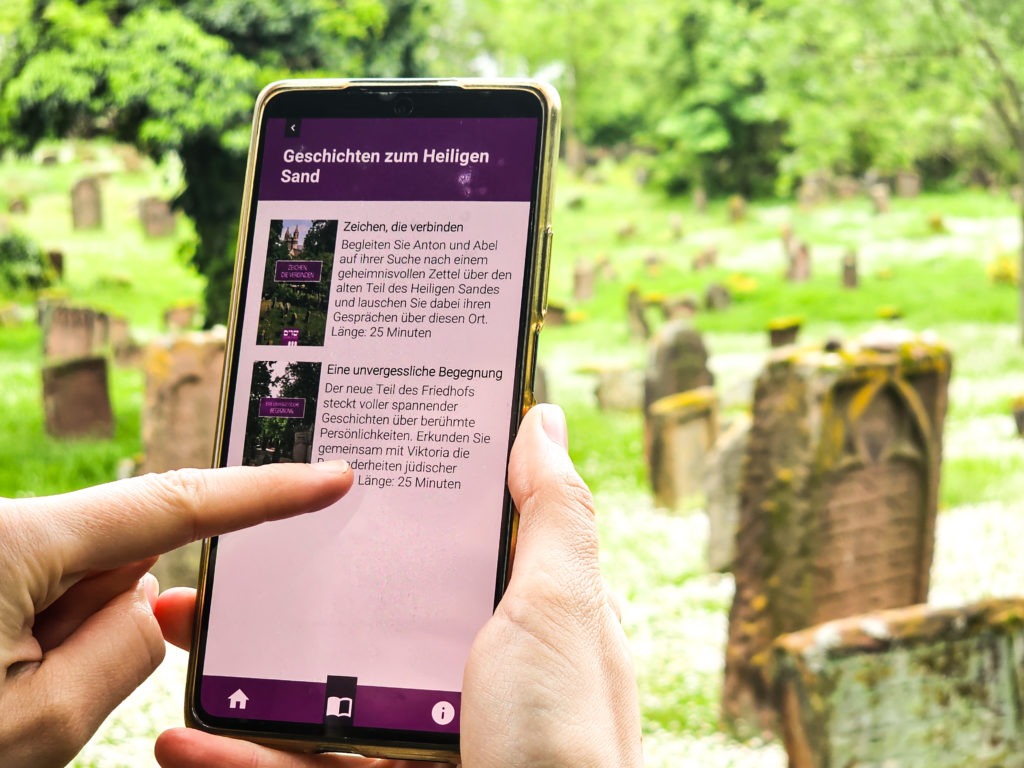
Program on UNESCO World Heritage Day
If, like me, you are also interested in the Jewish World Heritage Site, then I have another tip: on the occasion of UNESCO World Heritage Day on June 2, 2024, the 52 World Heritage Sites in Germany will open their doors. The SchUM sites in Worms and Mainz also have a varied program with free guided tours and free admission to the Rashi House. A premiere: Historically significant parchment sheets with commentaries by the scholar Rashi will be presented in the Rashi House for the first time. There will also be an exclusive guided tour of the mikvah in Worms, which you should not miss.

